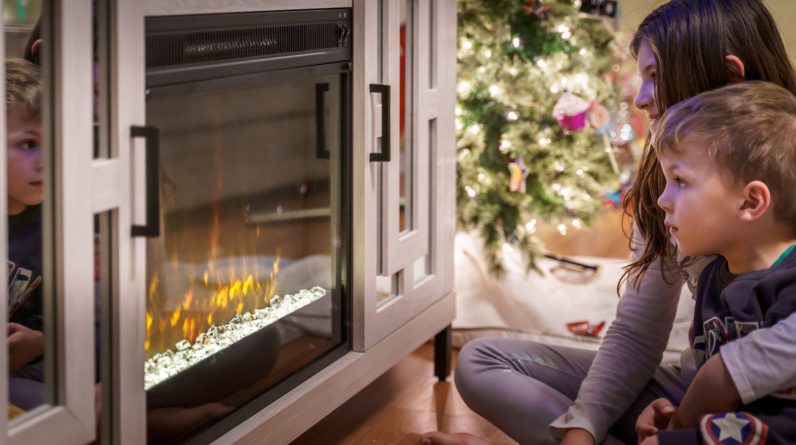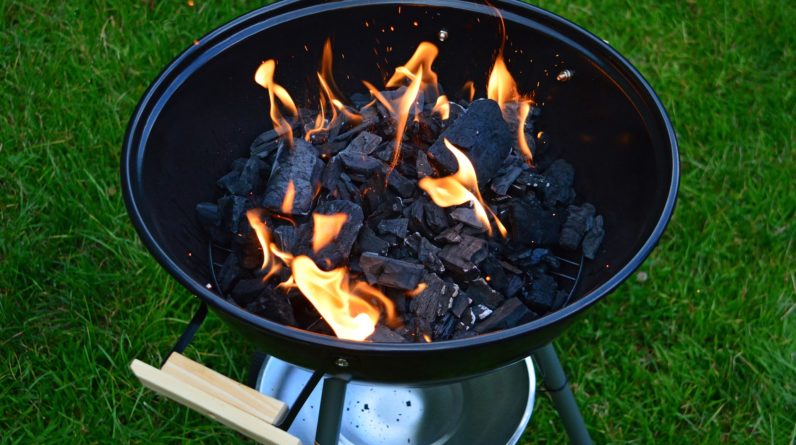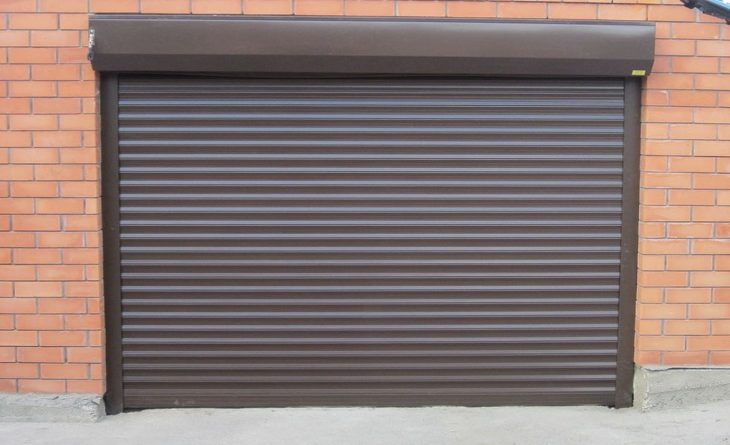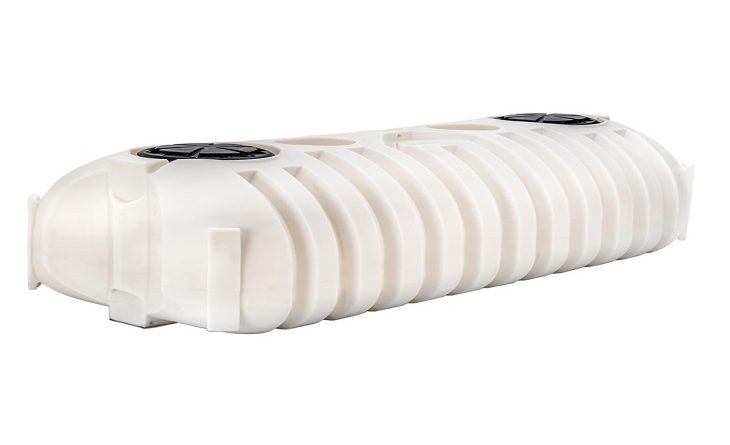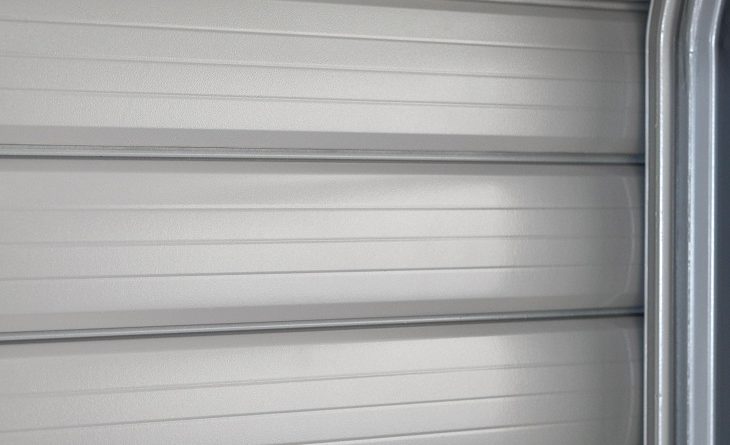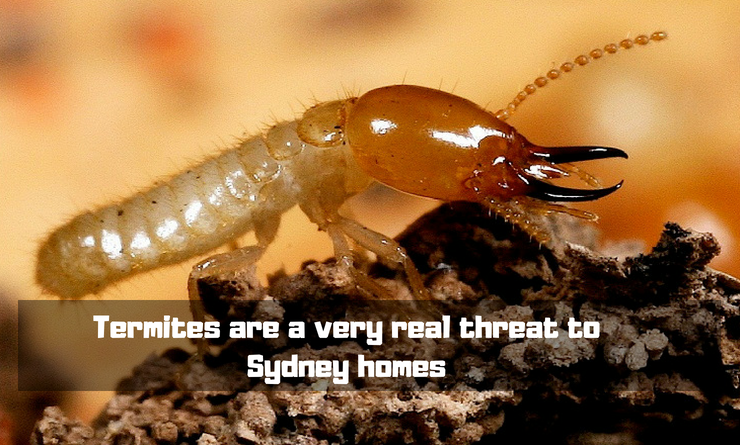
In many ways, termites are nature’s garbage disposal. They eat bits of food and organic matter, digest them, and excrete them into the soil. This makes the earth more nutritious for growing plants, which help us in all sorts of ways. We eat some of these plants, while others feed livestock, as well as the wild game that carnivores subsist on. Burrowing termites also turn and aerate the soil, making it permeable to air and water. So generally, termites are a crucial part of the circle of life.
This – however – is only a benefit if the termites remain in the soil. Once they migrate into human dwellings, they become a nuisance that can cause millions in property damage. In the wild, termites feed on everything from leftover human food to rotting fruit and leaves. But in your home, they eat wood, drywall, plaster, insulation, and sometimes metal. They eat half a kilo a day, so they can get through two feet of ‘food’ in a year – bad news for any building.
In Sydney, termites are estimated to destroy $700M worth of property annually. The scale of damage is worse because we often don’t realise termites are there until things have gotten elephant. It’s crucial to inspect your property for termites on a regular basis, because a third of all Sydney buildings are thought to be under attack at any one time.
Living the termite life
Termites live in colonies of up to 15 million members, and there are often several neighbouring colonies. In the wild, colonies largely stay out of each other’s way, since any that stray into a rival gang’s territory is instantly eliminated. However, multiple colonies can attack your home, as long as each one takes a single wall, room, or floor.
A colony is ruled by a queen with a 25-year lifespan who lays thousands of eggs every day. There’s a king too, and he helps her look after the babies, at least at the beginning of the colony. Colonies start with a single king and queen who mate just after it rains. Usually, you’ll see flying termites after a drizzle. Some of them pair off, hide in a hole with easy access to soil and wood, and play house, raising a colony of their own. Their new residence is sealed in saliva, mud, and termite excreta to protect the eggs as they hatch and grow.
Ordinary termites only live for a year or two, though they can last as long as five years, and older termites can regress, moulting into a younger version of themselves. Since rain showers spark mating and lead to formation of new colonies, Sydney’s humid conditions encourage the termite population to explode on a regular basis. Once they get into a home, they attack furniture and floorboards, but they can also eat through wooden supports inside the walls, rafters, and building foundations.
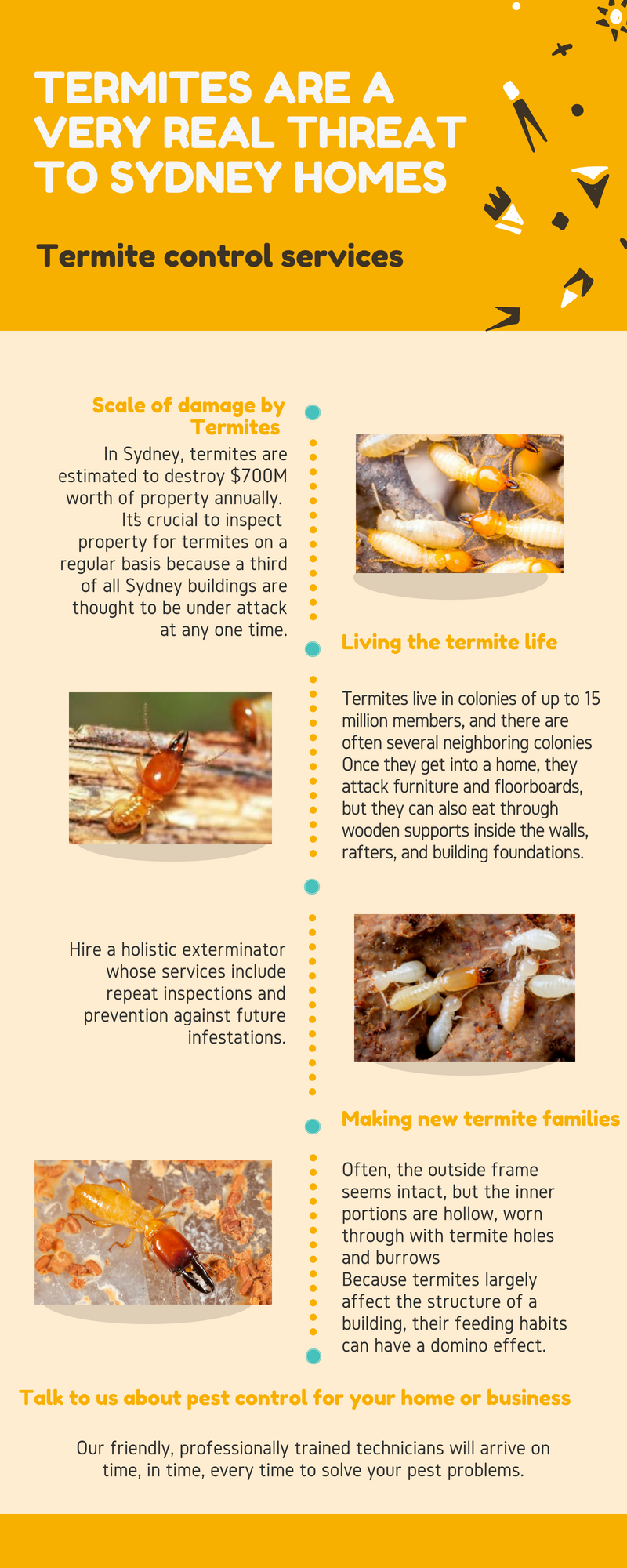
Making new termite families
Often, the outside frame seems intact, but the inner portions are hollow, worn through with termite holes and burrows. You may not even detect the damage until the walls and roof start to crumble, or you lean against a pillar and it succumbs to your weight. Regularly scheduled termite inspections can prevent this nasty (and extremely expensive) eventuality.
Because termites largely affect the structure of a building, their feeding habits can have a domino effect. When the inner frames collapse, taking your finishings with them, then you have to repair and replace both the inner and outer workings of the building, which doubles your reconstruction bill. By the same principle, you won’t see the extent of the damage because it’s largely hidden behind intact building facades. Only exterminators can spot termites early.
As a home owner or resident, if you see any signs of water damage, call the plumber, but call termite control services too, because termite attacks can look similar to leaks. Both termites and leaking pipes can make wood buckle, swell, discolour, or smell like mouldy mildew and damp. By the time termite damage is visible, your home is pretty much beyond repair, so implement measures to catch the problem before it gets there. Hire a holistic exterminator whose services include repeat inspections and prevention against future infestations.
Read More:
